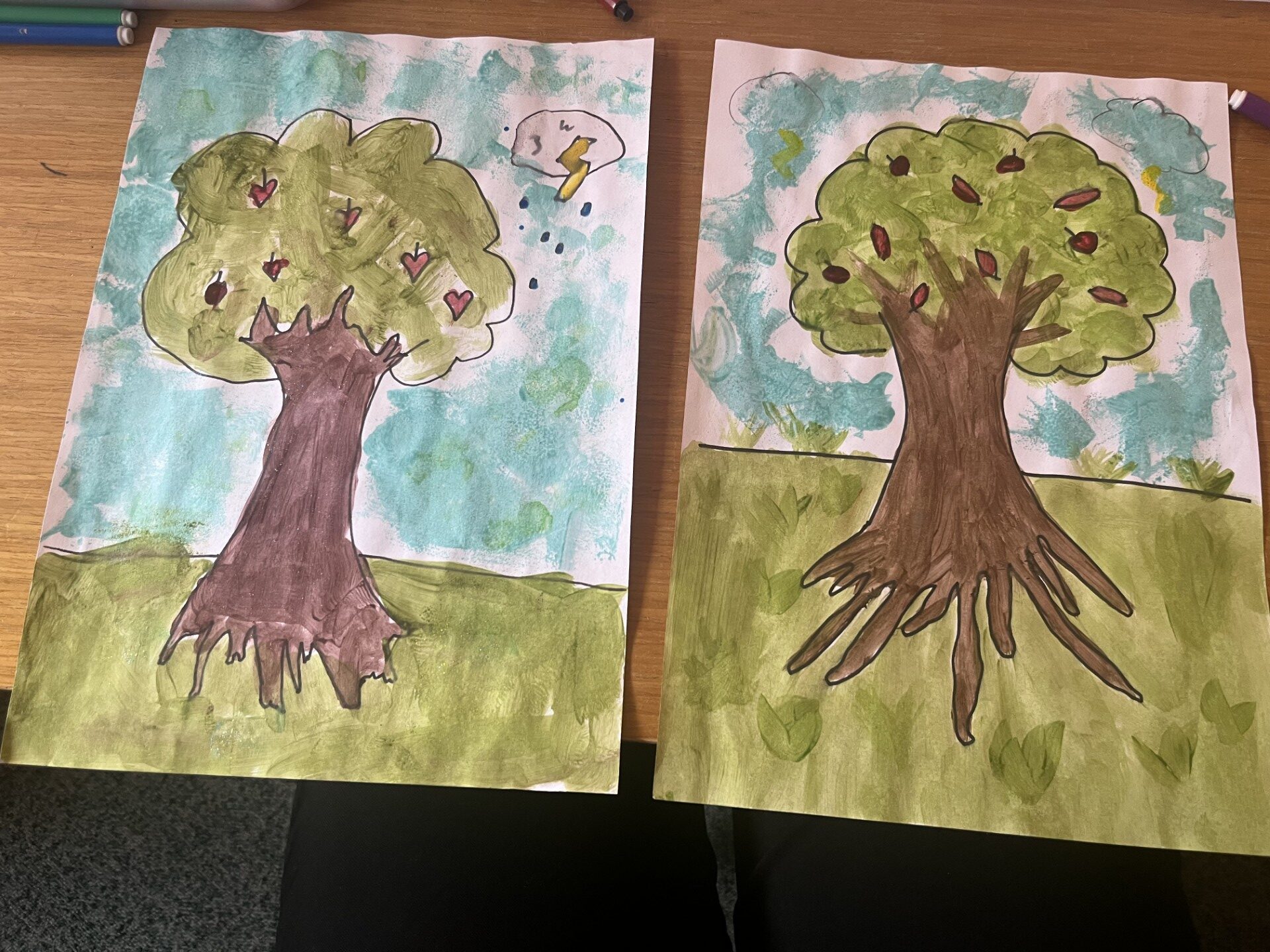As psychologists working with young people in care, finding creative and engaging ways to support their emotional and psychological growth is crucial. One such tool that we use is the Tree of Life, a narrative therapy technique. This method is particularly beneficial for young people with learning disabilities, as it uses visual and creative elements to help the young people articulate their experiences and strengths.

What is the Tree of Life?
The Tree of Life is a therapeutic tool where the young person draws different parts of a tree to symbolise their life.
The Roots: represent the young person’s background and origins, such as family history, cultural influences, and early life experiences. The roots help them connect with their identity and understand how their past shapes who they are today.
The Ground: provides a space to focus on the young persons present life, including where they are now and how they enjoy spending their days.
The Trunk: symbolises the young person’s core strengths and inner resources.
The Branches: The branches represent the young person’s hopes, dreams, and future aspirations.
The Leaves: highlight the significant people in the young person’s life who they love and care about.
The Fruits: represent the ‘gifts’ that the young person has inherited from the people they love. This could be gifts such as ‘bravery’, ‘compassion’, or ‘kindness’.
The Storms: represent the challenges in the young person’s life.
The Tree of Life offers a gentle and non-threatening method for young people to explore their experiences and emotions. It also deepens their connections with others due to its collaborative process. This approach empowers young people to take ownership of their own narratives, allowing them to share their stories on their terms, rather than having their experiences defined for them by others.
How Does It Benefit Young People?
Young people with learning disabilities often benefit from multisensory learning approaches. The Tree of Life uses visual and tactile elements, such as drawing, cutting, and pasting. This can make the therapeutic process more engaging and accessible. What makes the Tree of Life particularly valuable is that it allows the young person to take creative control. They can adapt the process in ways that feel personally meaningful. For example, they can amend what they add to the tree, such as including bugs or animals, personal symbols, or even seasons!
This flexibility enhances their involvement and ensures the tool resonates more deeply with their individual experiences.
Are you interested in joining our growing Therapy team? Head to supercare.org/careers to see our latest roles!
